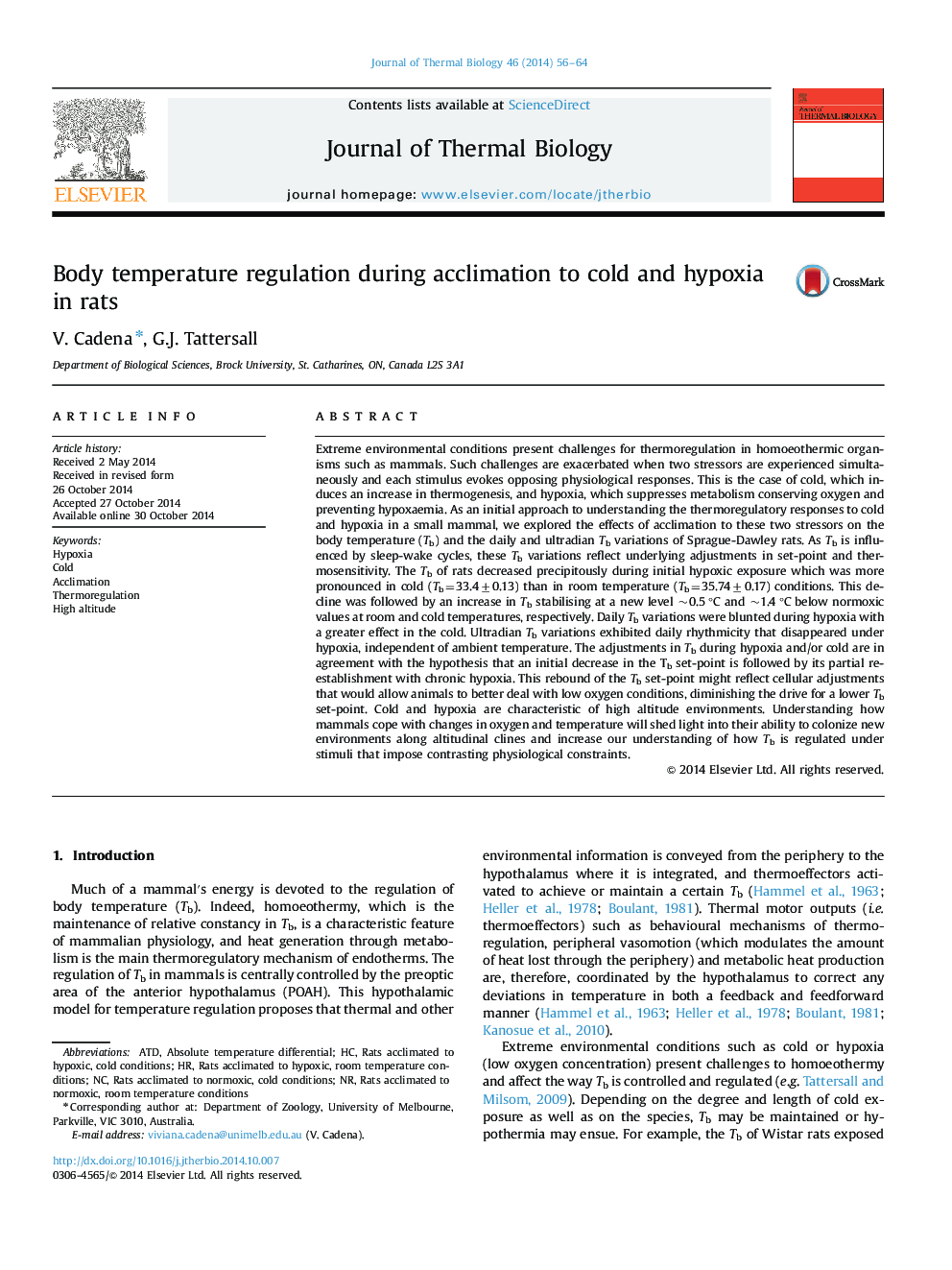| کد مقاله | کد نشریه | سال انتشار | مقاله انگلیسی | نسخه تمام متن |
|---|---|---|---|---|
| 2842866 | 1571099 | 2014 | 9 صفحه PDF | دانلود رایگان |
• We examined body temperature (Tb) of rats during acclimation to cold and/or hypoxia.
• Cold and hypoxia acclimated rats had lower Tb than hypoxia or cold acclimated rats.
• Ultradian Tb variations exhibit daily rhythm and increase during cold exposure.
• Hypoxia supressed daily variations in Tb and in the ultradian variations in Tb.
• Acclimation length and ambient temperature appear to modulate Tb set-point in hypoxia.
Extreme environmental conditions present challenges for thermoregulation in homoeothermic organisms such as mammals. Such challenges are exacerbated when two stressors are experienced simultaneously and each stimulus evokes opposing physiological responses. This is the case of cold, which induces an increase in thermogenesis, and hypoxia, which suppresses metabolism conserving oxygen and preventing hypoxaemia. As an initial approach to understanding the thermoregulatory responses to cold and hypoxia in a small mammal, we explored the effects of acclimation to these two stressors on the body temperature (Tb) and the daily and ultradian Tb variations of Sprague-Dawley rats. As Tb is influenced by sleep-wake cycles, these Tb variations reflect underlying adjustments in set-point and thermosensitivity. The Tb of rats decreased precipitously during initial hypoxic exposure which was more pronounced in cold (Tb=33.4±0.13) than in room temperature (Tb=35.74±0.17) conditions. This decline was followed by an increase in Tb stabilising at a new level ~0.5 °C and ~1.4 °C below normoxic values at room and cold temperatures, respectively. Daily Tb variations were blunted during hypoxia with a greater effect in the cold. Ultradian Tb variations exhibited daily rhythmicity that disappeared under hypoxia, independent of ambient temperature. The adjustments in Tb during hypoxia and/or cold are in agreement with the hypothesis that an initial decrease in the Tb set-point is followed by its partial re-establishment with chronic hypoxia. This rebound of the Tb set-point might reflect cellular adjustments that would allow animals to better deal with low oxygen conditions, diminishing the drive for a lower Tb set-point. Cold and hypoxia are characteristic of high altitude environments. Understanding how mammals cope with changes in oxygen and temperature will shed light into their ability to colonize new environments along altitudinal clines and increase our understanding of how Tb is regulated under stimuli that impose contrasting physiological constraints.
Journal: Journal of Thermal Biology - Volume 46, December 2014, Pages 56–64
